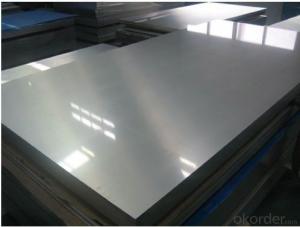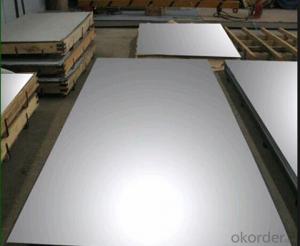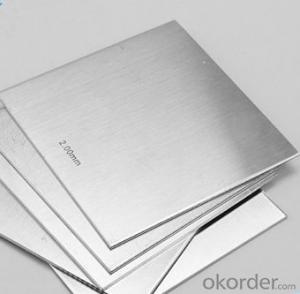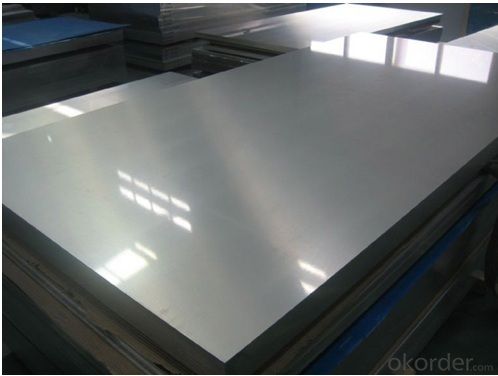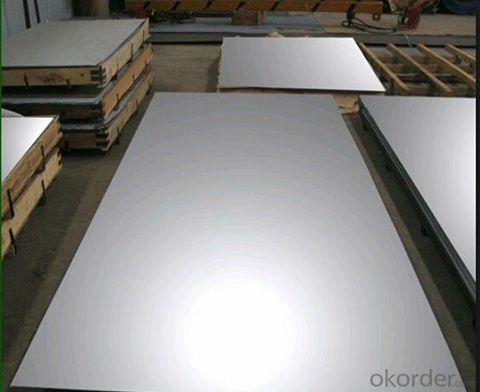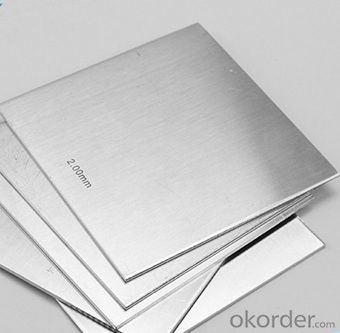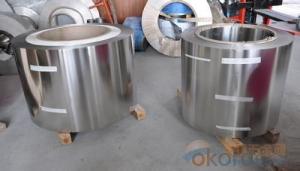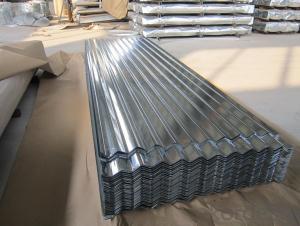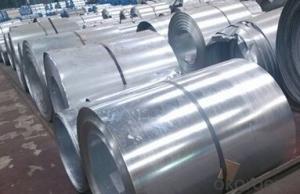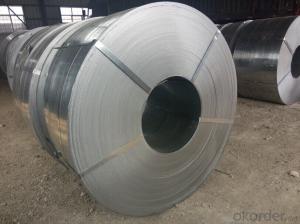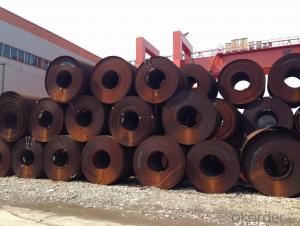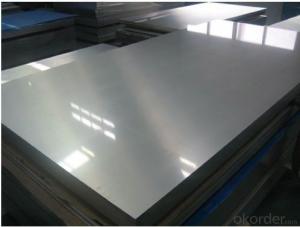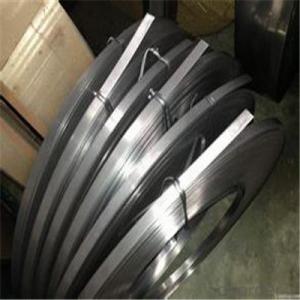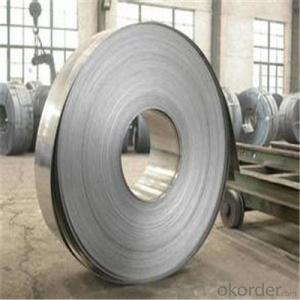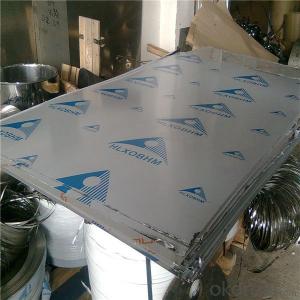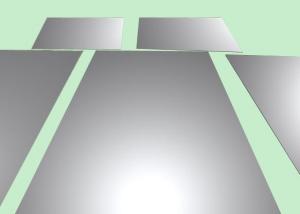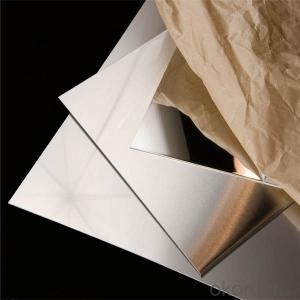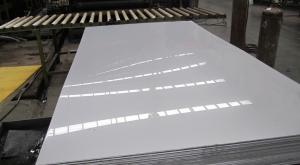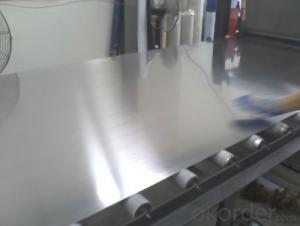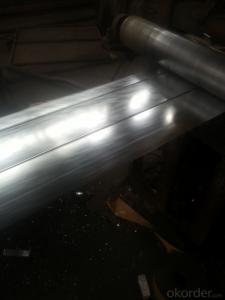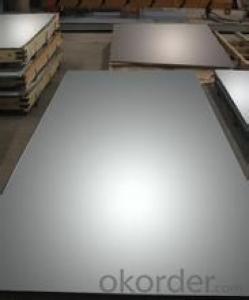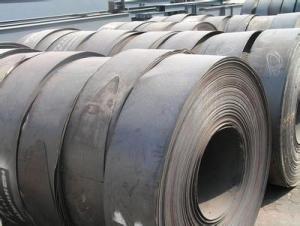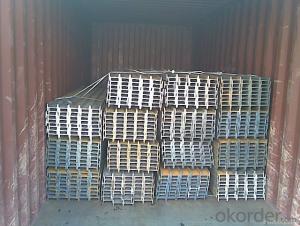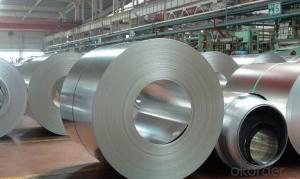304 Stainless Steel Sheet & Stainless Steel Plate
- Loading Port:
- Tianjin
- Payment Terms:
- TT OR LC
- Min Order Qty:
- 25 m.t.
- Supply Capability:
- 2000 m.t./month
OKorder Service Pledge
OKorder Financial Service
You Might Also Like
Specification
Product Brief Introduction
304 Stainless Steel Sheet & Stainless Steel Plate
---Stainless steel plate applies to construction field, ships building industry, petroleum,
chemical industries, war and electricity industries, food processing and medical industry,
boiler heat exchanger,machinery and hardware fields.
Product Specification
Standard:ASTM, GB,JIS,JIS G3302 ASTM 755 EN10169
Grade: 304/410/409/430/202/201
Thickness: 0.15mm~3.0mm,
Width: 1250,600-1250mm
Chemical composition:
C | Si | Mn | Cr | Ni | P | S |
0.160 | 0.476 | 11.231 | 12.50 | 0.900 | 0.039 | 0.010
|
FAQ
1. How long will we receive the goods ?
45days after receiving workable L/C
1. how do you control the quality ?
we have our own quality control department ,we will arrange QC person to see the production line ,when goods finish ,before shipment ,our QC person will check the quality as per our test report request ,if the goods is ok ,then we issue the test report ,and we allow the goods shipping ,otherwise will not allow ship the goods.
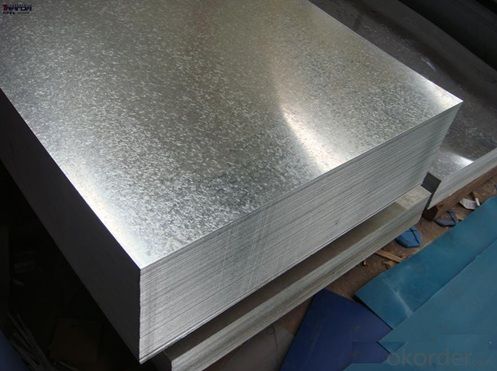
- Q: How are steel strips protected against damage during handling?
- Steel strips are protected against damage during handling through various methods such as applying protective coatings, using edge protectors, employing proper lifting and handling techniques, and ensuring secure packaging and strapping.
- Q: What are the different types of protective coatings for steel strips?
- There are several different types of protective coatings that can be applied to steel strips to enhance their durability and prevent corrosion. These coatings are designed to create a barrier between the steel and the external environment, thereby minimizing the risk of damage and extending the lifespan of the steel strips. Some of the most common types of protective coatings for steel strips include: 1. Paint coatings: These coatings consist of a layer of paint that is applied to the surface of the steel strips. Paint coatings provide a protective barrier against moisture and other corrosive elements, preventing direct contact between the steel and the environment. 2. Galvanized coatings: Galvanizing is a popular method of protecting steel strips from corrosion. This process involves immersing the steel strips in molten zinc, which forms a protective layer of zinc on the surface. Galvanized coatings provide excellent resistance against rust and can withstand harsh environmental conditions. 3. Powder coatings: Powder coatings are applied as a dry powder and then heated to create a protective layer on the steel strips. This type of coating is known for its durability, resistance to chemicals, and excellent adhesion. Powder coatings also offer a wide range of colors and finishes, making them a popular choice for decorative purposes. 4. Epoxy coatings: Epoxy coatings are a type of protective coating that is formed by mixing epoxy resin and a hardening agent. These coatings provide excellent adhesion, chemical resistance, and durability. They are often used in industrial applications where steel strips are exposed to harsh conditions, such as chemical plants or offshore structures. 5. Polyurethane coatings: Polyurethane coatings offer a high level of protection against abrasion, impact, and chemicals. They are commonly used in applications that require a flexible and durable coating, such as automotive parts or machinery components. 6. Ceramic coatings: Ceramic coatings are known for their exceptional resistance to high temperatures and chemical corrosion. These coatings are often used in industries such as aerospace and automotive, where steel strips may be exposed to extreme conditions. It is important to choose the right type of protective coating for steel strips based on the specific requirements and environmental conditions. Factors such as the intended use, exposure to moisture or chemicals, and temperature variations should be considered when selecting the appropriate coating. Consulting with a coatings expert or manufacturer can help determine the best protective coating for the desired application.
- Q: What is the composition of steel strips?
- Steel strips are primarily composed of iron and carbon, with small amounts of other elements such as manganese, silicon, and sometimes traces of other alloying elements like chromium or nickel.
- Q: Can steel strips be used in the production of automotive suspension components?
- Yes, steel strips can be used in the production of automotive suspension components. Steel strips are commonly used in the manufacturing of various automotive parts, including suspension components, due to their high strength, durability, and ability to withstand heavy loads and impacts. They provide the necessary rigidity and support required for suspension systems, ensuring stability, control, and proper functioning of the vehicle's suspension.
- Q: How are steel strips protected against magnetic interference?
- Steel strips can be protected against magnetic interference by applying a thin layer of non-magnetic material or coating, such as a polymer or ceramic, on the surface of the strips. This layer acts as a shield, preventing external magnetic fields from affecting the steel strips.
- Q: How do steel strips contribute to reducing greenhouse gas emissions in various applications?
- The energy efficiency, recyclability, and durability of steel strips play a crucial role in reducing greenhouse gas emissions in various applications. Firstly, the production process of steel strips is highly energy-efficient. Abundant iron ore is used to make steel, and advancements in technology, such as electric arc furnaces, have significantly reduced energy consumption compared to traditional blast furnaces. Additionally, measures like waste energy recovery systems have been implemented by steel manufacturers to further improve energy efficiency, resulting in lower emissions during production. Furthermore, steel strips are highly recyclable, maintaining their properties even after multiple recycling cycles. This not only reduces the need for new steel production but also requires less energy and resources compared to manufacturing virgin steel. By utilizing recycled steel strips, the demand for raw material extraction and processing is significantly reduced, leading to a substantial decrease in greenhouse gas emissions. Moreover, steel strips are known for their durability and longevity in various applications. Their strength and resistance to wear and tear make them a preferred choice in industries like construction, automotive, and infrastructure. By using steel strips with a longer lifespan, the need for frequent replacements and repairs is minimized, resulting in lower emissions throughout the product's lifecycle. In conclusion, the energy efficiency, recyclability, and durability of steel strips contribute significantly to the reduction of greenhouse gas emissions in various applications. By implementing energy-efficient production processes, promoting steel recycling, and leveraging the durability of steel strips, we can effectively mitigate the environmental impact and work towards a more sustainable future.
- Q: How are steel strips used in the production of automotive springs?
- Steel strips are used in the production of automotive springs as they provide the necessary strength and flexibility required for the springs to absorb and distribute the weight and impact of the vehicle. These strips are shaped and formed into the desired spring shape, providing stability and support to the suspension system, leading to enhanced ride comfort and handling in automobiles.
- Q: What are the different tolerances for steel strips?
- The specific application and industry standards can cause variations in the tolerances for steel strips. The desired level of precision and quality in the final product is typically ensured by specifying tolerances for steel strips. Regarding width tolerance, the manufacturing process and customer requirements determine the range of steel strips. For instance, precision cold-rolled steel strips used in industries like automotive or electronics may have a width tolerance of +/- 0.05mm or even tighter. In contrast, hot-rolled steel strips used in construction or structural applications may have slightly wider tolerances, such as +/- 0.1mm. Thickness tolerance is another crucial aspect, especially for steel strips used in critical applications. The manufacturing method and customer specifications influence the tolerance. Cold-rolled steel strips, known for their high precision, often have tight thickness tolerances ranging from +/- 0.005mm to +/- 0.03mm. On the other hand, hot-rolled steel strips may have slightly looser tolerances, typically ranging from +/- 0.1mm to +/- 0.5mm. Flatness tolerance is also a critical factor, particularly for steel strips used in applications that require a smooth and flat surface. The maximum deviation from a perfectly flat surface is usually specified as the flatness tolerance. For example, cold-rolled steel strips may have a flatness tolerance of a few microns, such as 0.002mm. In comparison, hot-rolled steel strips may have a tolerance of around 0.1mm. Additionally, edge burr tolerance, surface quality, and mechanical properties may also be specified based on the application and customer requirements. It is important to note that these tolerances are general guidelines, and specific tolerances can vary depending on the industry, product requirements, and individual manufacturers' capabilities. Therefore, it is always crucial to consult the relevant standards, specifications, or the steel strip manufacturer for precise information on tolerances for a specific steel strip.
- Q: What is the impact resistance of a steel strip?
- The impact resistance of a steel strip refers to its ability to withstand and absorb the force of an impact without breaking, cracking, or deforming.
- Q: How do steel strips perform in terms of electromagnetic shielding?
- Steel strips are highly effective in terms of electromagnetic shielding. Due to their high electrical conductivity and magnetic properties, steel strips can efficiently redirect or absorb electromagnetic fields, protecting sensitive electronic devices from interference and maintaining a shielded environment.
Send your message to us
304 Stainless Steel Sheet & Stainless Steel Plate
- Loading Port:
- Tianjin
- Payment Terms:
- TT OR LC
- Min Order Qty:
- 25 m.t.
- Supply Capability:
- 2000 m.t./month
OKorder Service Pledge
OKorder Financial Service
Similar products
Hot products
Hot Searches
Related keywords
